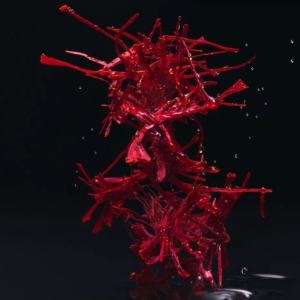Salt Is Everything
By Fleur Chattillon
Think; a seasoning, a chemical formula, a preservation resource, a religious ritual, a symbolic value, a way of payment, de-icing roads, cleaning and beauty products. Yes initially these things might seem like they are not connected but these are all possible ways to describe one very well-known product: Salt. Even though most people probably think of salt as simply that white granular seasoning found in shakers on virtually every dining table or added to basically every dish they eat, it’s so much more, with even biblical references and linked to histories in Russia and China. The history of the product touches our daily lives. Read all about it in Salt Is Everything.
Salt was often difficult to obtain, so in ancient Rome, it was a highly valued trade item. The product became so valuable that they used it as a way of payment, specifically for soldiers, and because of that, we have the term salary, literally translated from the Latin ‘Sal’ meaning salt.
It is and always has been intrinsic in our daily life and an elemental part since more or less the early days of mankind standing on two feet. It can be found in nature such as the sea and salt flats all around the world.
”Salt is born of the purest of parents: the sun and the seas”
Pythagoras

Salar de Atacama, a salt flat in Chile, Image by Sebadelval
The earliest evidence that was found of processing dates back to around 6000 BC, when people living in the area of present-day Romania boiled sea water to extract salts; salt works in China also date to approximately the same period. It has been the subject of many stories, religious rituals, fables and fairy tales and has been used by humans for thousands of years.
There are more than 30 references to salt in the Bible, including the well-known expression “salt of the earth”,( Matthew 5:13), Jesus said ‘You are the salt of the earth, but if salt has lost its taste, how shall its saltiness be restored?’ which in today’s context means a very good and honest person or group of people.

Sea salt in a wooden spoon, Image by mkupiecy
In China, they discovered over 40 types of this incredible product. They used and processed it, and eventually made descriptions of two methods of extraction that are similar to the processes we use today.
All through history, the availability of the product has been pivotal to civilization, which means that humans, like all life, need dietary salt to survive. The human body requires a small amount of sodium to conduct nerve impulses, contract and relax muscles, and maintain the proper balance of water and minerals.
Another of its amazing abilities is to preserve food. It helped to eliminate dependence on the seasonal availability of food and made it possible to ship some foods over long distances. This even goes back to the storage of people using salt in the preservation of mummies in ancient Egypt 2000BC.

Salt harvesting in Vietnam, Image by Quangpraha
It is not only a practical product that we can use but it can be of religious value to a lot of people. In many cultures, offering bread and salt to visitors is part of traditional etiquette. And it also played a vital part in religious rituals in different cultures as it is seen to symbolize purity.
In ancient Greece, worshippers used the rather disturbing practice of sacrificing virgins, which was carried out with millstones that would have been rubbed with salty brine beforehand in order to make them sacrificial. If salt fell from the head of the sacrifice’s chosen victim, it was considered a sign of bad luck.
In the Buddhist tradition, salt repels evil spirits, which is why for this community it is customary to throw salt over your shoulder before entering your house after a funeral: it scares off any evil spirits that may be clinging to your back.
On the Sabbath, people of the Jewish faith sprinkle salt on bread during their Friday night meal, as it symbolizes the eternal covenant between God and Israel. As a preservative, salt never spoils or decays, signifying the immortality of this bond.

Image by LoggaWiggler
The development and usage of it only grew over the years and people found a lot of methods to use it in cooking food. Many of us probably can’t even imagine cooking or eating food without it.
As mentioned we have the early humans to thank for our use of salt in food too. These early sapiens obtained their salt from eating meat. As they turned to agriculture and their diet changed, they found that added salt (probably from the seawater they used to cook with) gave vegetables the same salty flavour they were accustomed to with meat.
When it comes to food, we are hardwired to crave salt, because our bodies need it to survive and tell us we need to take it when available, so it is a vital ingredient to understand.
And exactly for that reason celebrity chef and tv presenter James Strawbridge wrote the book: ‘Salt and the Art of Seasoning’. It’s about his passion and deep understanding of this artisan ingredient.

Cooking ingredients including salt, Image by Sontung57
According to him, it should be seen as something extraordinary, it should be something to get excited about, not as a last resort that is sprinkled over land food to try and improve it as it’s served.
The book is about enhancing the flavour and texture of food, preserving, pickling and fermenting food and other depts about using the right type of salt in the right way.
He explores and explains a lot of different techniques. The book is meant to be a kitchen essential, just like the seemingly humble yet wonderful ingredient it champions. When you use these recipes or techniques it all comes down to making you reconnect with salt as a product and why it is so vital when we are seasoning a dish with it.
The word ‘seasoned’ means to have added several spices or herbs to food and it also describes when someone is accustomed to particular conditions and is therefore experienced. James Strawbridge feels that adding the correct amount of it at the precise time and in the right way is what makes a ‘seasoned’ chef.
Not only has salt a strong influence and effect on the world of food and cooking, but it is vital for our health and can be used in a lot of beauty products. It keeps our electrolytes, (substances that help to deliver water to your body’s cells), in balance. It keeps our organs lubricated and hydrated, and our blood optimally flowing. So it helps our body on the inside but also outside.
When you look at it, salt is a beautiful wonder. It can help you physically exfoliate the skin, ridding it of expelled toxins, dirt, dead cells and pollution.

Pink Himalaya salt, Image by Monicore
Mostly Pink Himalayan and Epsom salts give the lymphatic, which is part of your immune system, a nice boost. Your Lympathic system has many functions, they include protecting your body from illness-causing invaders, maintaining body fluid levels, absorbing digestive tract fats and removing cellular waste. That is why bathing in Epsom salts results in better water drainage and the reduced appearance of cellulite. Overall, it is a cleansing, purifying, balancing wonder of an element.
There are a lot of beauty products with salt in them such as bath salt, scrubs or face products because sea salt naturally cleanses and heals, and also fights bacteria that cause acne, naturally. Most of them have traditionally been targeted at women. But the brand ‘Salt Grooming’ made a line of products, especially for men, and their specific needs.

Thickening Shampoo and Conditioner set, Image by Salt Grooming
‘Salt Grooming’ made a line of thickening shampoos and conditioners for men, developed in Britain by people who take pride in the art of sprucing, They proudly introduce its most clinically advanced formulations to date. In the pursuit of perfectly thick hair, seven powerful active ingredients have been combined to create an unbeatable cleanse and condition combo that thickens, strengthens, and nourishes hair at a cellular level.
Since men have to deal with male pattern hair loss at a certain age they included very specific ingredients that help stimulate healthy hair growth. Such as Ginkgo Biloba which improves blood flow and circulation in the scalp.
Besides the main ingredient of Salt, Red Clover Leaf and Saw Palmetto are two essential ingredients in the products, both of which inhibit enzymes and hormones responsible for male pattern hair loss. Also, Aloe leaf regenerates skin cells on the scalp.

Hybrid hair and Marine Mist set for styling, Image by Salt Grooming
So it might be pretty clear now how the history of this somewhat mysterious product touches our everyday lives and how we still, to this day, find new and effective ways to use it in our food and beauty products. In some ways, it became such a simple thing that everybody knows and uses, but because it has so much potential and is so vital, people still find ways to reinvent it.
The book ‘Salt and the Art of Seasoning’ is available on the 18th of May, pre-order here
All products of the ‘Salt Grooming Line’ are available here
If you enjoyed reading Salt Is Everything why not read Clean, Shaven and Timeless
.Cent London, Be inspired; Get involved.






